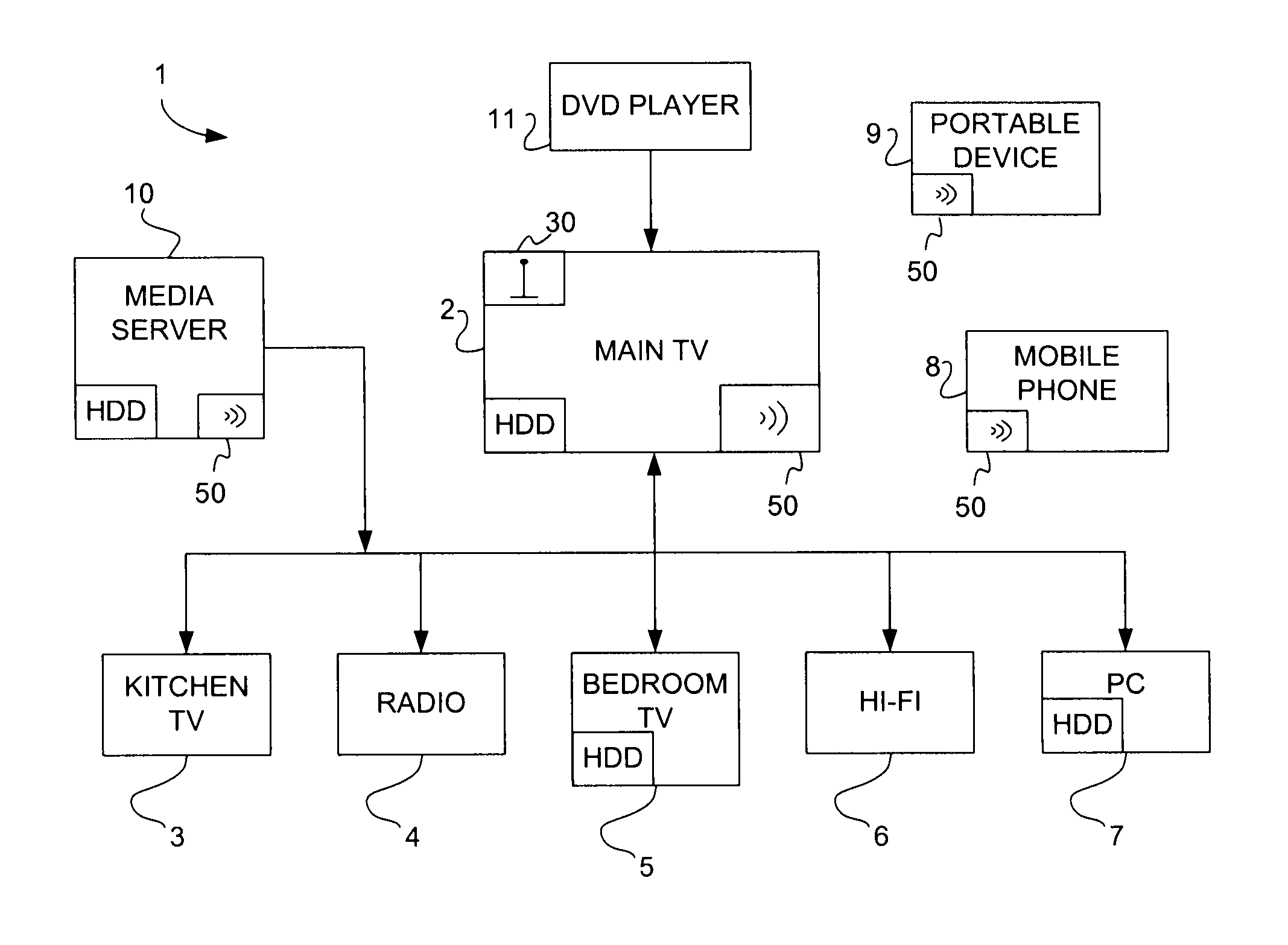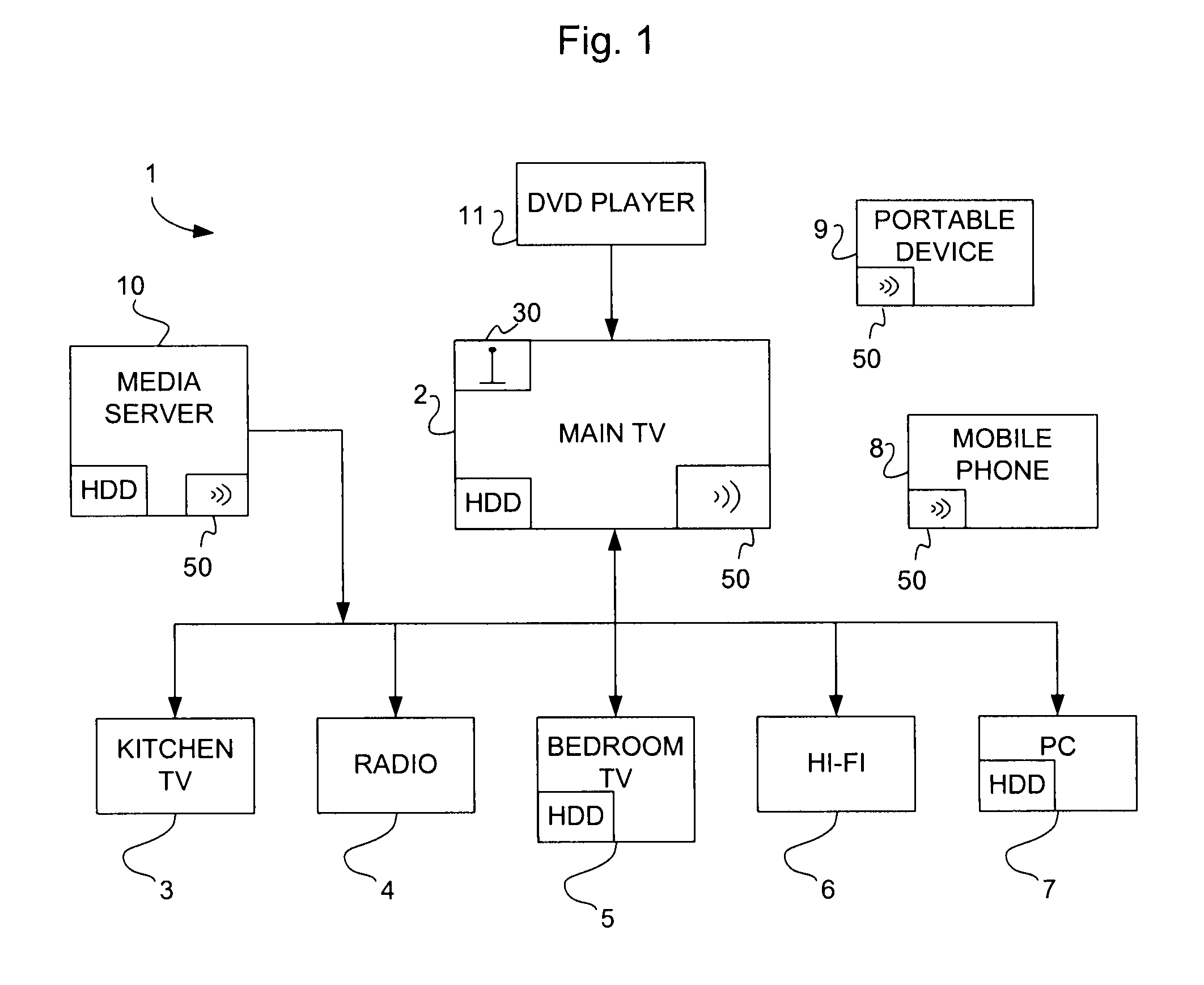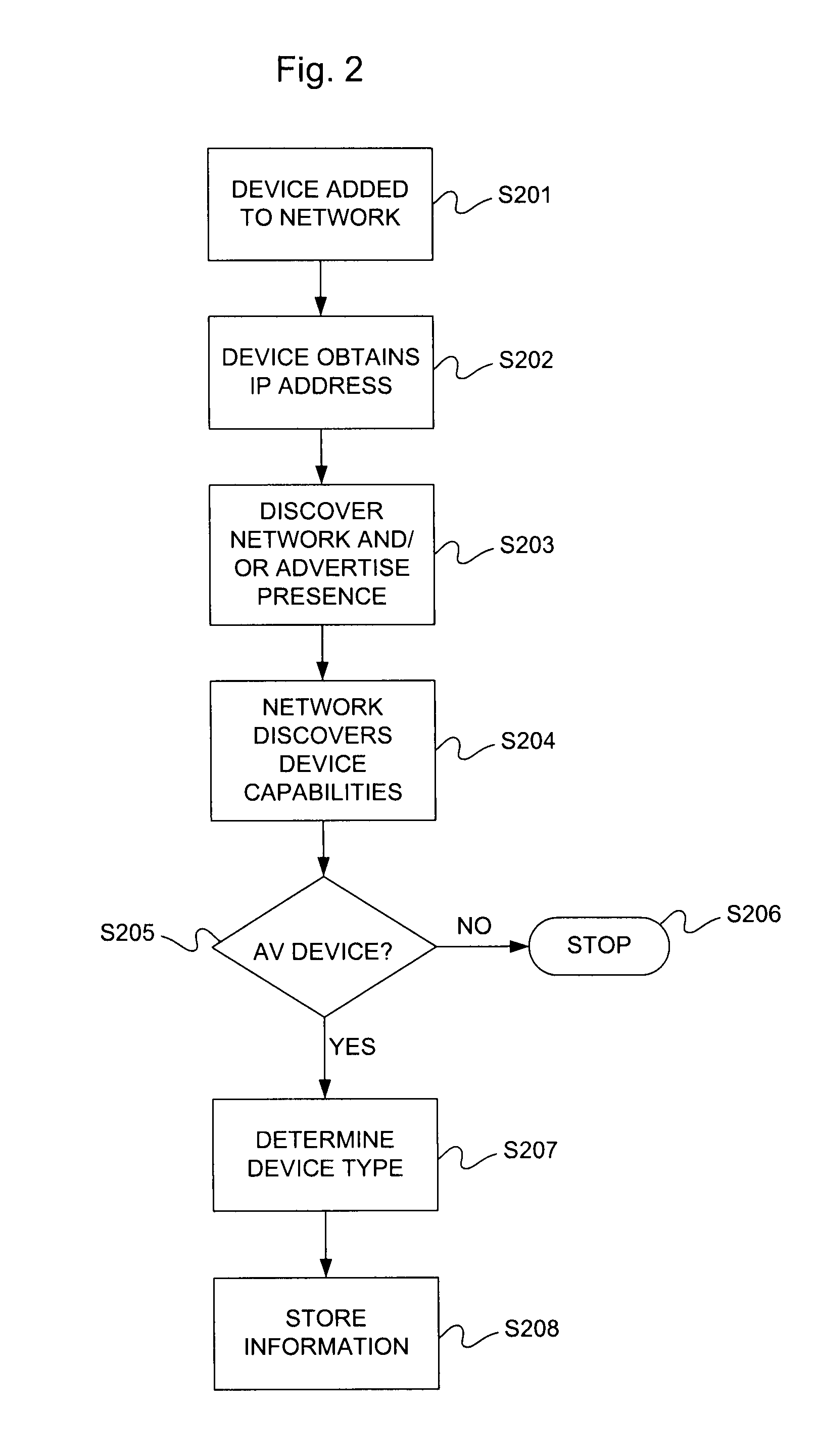[0017]According to this aspect, the invention allows for the transferral of the output of audiovisual content or media across a network, to a location selected by a user from the original output location. This allows a user to ‘send’ the content to a new location which they intend to move to (for example another room in a house), so that the content will be waiting for them when they arrive. This is advantageous because it avoids the user needing, for example, to either re-tune to a broadcast at the destination or to physically transfer the audiovisual content (for example a DVD) to the new location and then re-locate the playback position at which the playback was interrupted when the user changed locations. Also, the automatic transfer avoids the need for the user to search for and access any information which may be stored on the network in connection with a previous viewing of the content in order to start playback from the interruption point. Instead, the
system responds to the user's original input so that when they arrive at the destination the content is awaiting playback from the interruption point.
[0019]According to these embodiments, the invention allows for the transfer of content to devices which are not in a full power state at the time the transfer is initiated by the user. In UPnP networks, devices in a low power or ‘sleep’ mode remain registered with the network and can be awoken by a message from the network. The present invention uses this functionality to allow the user to transfer the audiovisual content to the device in a low
power mode, turning the device on into full
power mode, so that playback of the content can begin as soon as possible at the destination. That is, there is no
delay because the user has to go to the destination and put the destination device into full
power mode. Conventional UPnP networks do not ‘remember’ devices which have been completely turned off. When a device is turned off, it sends a ‘leaving network’ message, so that control points on the network remove the device from the network map. This is a problem because it means that the devices cannot be accessed by the network, and therefore transfer of content to the device cannot be arranged. In the present invention, devices which are turned off do not send a ‘leaving network’ message, so that the device remains on the network map. In some embodiments, the device may send a ‘turning off’ message to the network, but this only serves to inform the network of the power state of the device, and does not result in the device being removed from the network map. As a result, although communication cannot be established with the device whilst it is off, the network remains ‘aware’ of the device when it is off, and can therefore schedule transfers of audiovisual content to the device, to occur once the device is turned on. This allows a user to arrange a transfer of audiovisual content from a first device, and for the transfer to be completed by turning on the second, destination, device without having to then perform any further steps to set up communication of the destination device with the first device.
[0020]Preferably the method further comprises: ceasing the output of the audiovisual content on the first output device; and the outputting of the audiovisual content on the second output device occurring from the point at which output was ceased on the first output device. This allows for the playback of content at the second output device to be started at the point playback was interrupted on the first device. This avoids the user having to search for the playback position in the audiovisual content at the second device, enabling a smooth transition for the user when switching playback devices.
[0024]Preferably, the method further comprises: determining which devices associated with the network are suitable for outputting the audiovisual content, and informing the user of the suitable devices, at the first output device, before the user selects the second output device. Further, at least one of the first and second output devices may be a
television set, a display screen, a
receiver for signals representing audio information, a hi-fi, a computer, a
set top box, a media streamer device, a gaming console or a media player. This prevents the user being presented with the option of transferring the audiovisual content to a device on the network which is not capable of outputting the content. This may be achieved by either only informing the user of the suitable devices, or may be achieved by informing the user of all devices associated with the network with an indication of those devices which are suitable for the transfer.
[0025]Preferably, the network is a network in accordance with the
Universal Plug and Play standard. UPnP networks allow for ease of set-up, which is further enhanced by DLNA. As such UPnP networks are well suited for the
home environment. However, the invention may be implemented on any
network architecture.
 Login to View More
Login to View More  Login to View More
Login to View More 


